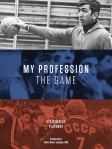I have always been brought up as a coach that the wrong footwork (right handers making their close step with left then right foot) in spiking is in fact wrong. The reasons have always been to do with biomechanical efficiency and injury prevention. In fact if you stand on the ground with your right foot in front of your left and try to rotate your upper body as you would in a spiking motion, your back hurts! Imagine actually spiking from that position. My observations have added a third reason, and that is straight technical. From the position you create following the left-right footwork it is much, much more difficult to externally rotate and spike cross court. And so everything is clear. The wrong footwork is bad and when I have had the opportunity, I have always corrected that in my players although not all coaches do. Great players have emerged in both men’s (Ljubomir Ganev) and women’s volleyball (Angelina Grün) whose wrong footwork didn’t restrict them.
Recently my confidence in this theory has been shaken by a colleague who maintained, following the principles of differential learning, that when allowed to explore movement possibilities, each individual will choose the movement pattern that is most efficient for it. He further said that once the body had laid down this pathway, to change it would create imbalances and inefficiencies and therefore injury risk and performance detriment. When I hear this I think of those players whom I have fixed, and how I ruined their futures and quickly go back to the old way of thinking.
My favourite story about attack footwork is one I have heard, but not read so it may be apocryphal, about Karch Kiraly. Apparently when he was younger he used a left-right (ie wrong) closing step. You can see it in the first action of this video from 1981. As the US swing hitting system developed he found this to be restrictive, so he changed his footwork to the correct way (which you can see in all these old Olympic videos ). When he retired from indoor volleyball and went back to playing on the beach he found this footwork restrictive, so he changed back (which you can see in this video from 19 I have thought a bit about it but I given that he always played left side in beach volleyball, I can never get my head around how it would have been an advantage to be a wrong footer.
All of those things popped into my head the other day watching the Bulgarian middle blocker Nikolay Nikolov. He is definitely an odd one. He spikes, very well, using wrong footwork. He jump serves, also very well, using correct footwork. So this tells me that it is not a question of efficiency as he can do both by choice. That would tend to suggest that he sees an advantage in situation, á la Karch. Which brings me to my question… What could be the advantage that someone sees in having one footwork for attack and one footwork for serve? I am perplexed.
Here is some video of him attacking and blocking.
__________________________________________________________________________________________________
Read about the great new Vyacheslav Platonov coaching book here.


Hi Mark. I’d differentiate between approaches which result in the right foot being ahead of the left (for a righty) and an approach which keeps the left foot forward. The former is very problematic for the reasons you mentioned. The latter is less so because the hips remain open, but it does hamper the broad jump. In Nikolov’s case, it makes a lot of sense. He wants to broad jump for his serve, but as a middle he’d rather not broad jump. Likewise with Karch. Indoors as OH he needed the broad jump, but in the sand not so much.
LikeLike
Mark,
finaly! thinking out of the box. That’s what makes a coach great. When you put it to it’s simplest interpretation you may say that there is no wrong foot pattern. “Reverse dominant” is something from the past. Every volleyball player has his own preference rhythm. The body will listen to what the brain says. When the young player is searching and the rhythm is “neutral” so you can still learn and go for left-right. But when the print already made his “natural” way in the brain: don’t try to change, because the footprint is chunked in the brain and difficult to change. The players who were forced to change will probably make al lot more mistakes under pressure. All this stuff can we trace back to “Action type”. It says that everey individual has his own way of moving, learning etc. Bertrand Théraulaz en Ralph Hippolyte are two former coaches who made Action type their livework. They wrote a lot of articles about it. Personal l like the idea that coaches will look in an other way to their players. Unique individuals.
LikeLike